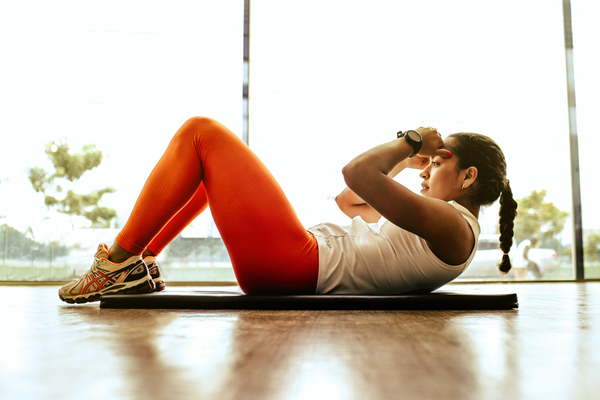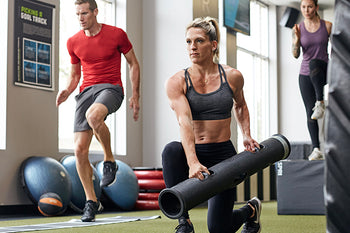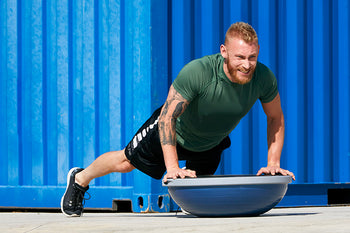High(er) Intensity Training

Author: SPRI Master Instructor
The following are excerpts from SPRI Master Trainer Jonathan Ross Muscle & Fitness ® article on the benefits of plyometric training:
1. Plyometrics aren’t really sexy for physique-conscious guys but they’re missing out. How can plyometrics affect muscle growth and/or fat loss?
Look at a sprinter’s physique. Training explosively challenges the high-threshold motor units – the nerves and muscles that are the body’s biggest, fastest, and strongest…and also the most prone to hypertrophy. The body only calls on these when the demand requires it. Moving rapidly also sends a powerful hormonal trigger to the body to carry less ballast. If you need to move rapidly, every bit of your mass had better have a purpose so your body starts getting leaner to get faster. The body, quite literally, is triggered to become a lean, mean, speed machine.
2. What are the muscle fiber types that are primarily affected by plyos?
Type II muscle fibers – the ones most inclined to hypertrophy, produce high amounts of force, and fatigue more rapidly. We have these fibers all over our body, not just in the legs. Performing plyometrics with the upper body, lower body, and core muscles provides a complete plyometric training experience.
3. How can plyometric training affect strength on traditional lifts like squats and deadlifts?
When you jump, you accelerate out of and through the bottom part of the range of motion of a squat. This explosiveness helps build strength in the most challenging parts of a lift. For example, on a heavier squat, the hardest part is getting out of the bottom. Developing a powerful neuromuscular response of the body in that bottom position helps with strength. Strength and speed have different characteristics but they are generated by the same muscles and nerves.
4. How should the average person build plyos into the context of their usual weekly workout schedule? They’re very draining on the CNS, so you don’t want to risk diminished strength if you’re training legs heavy, for example. Your thoughts?
For newer exercisers, it is best to train strength and power as discrete, separate training sessions. For intermediate to advanced exercisers, there is no harm in combining plyometrics and strength into the same session. When doing so, in my experience it is better to include plyometrics first as the speed of movement requires a fresher more responsive nervous system more so than slower, strength movements. Additionally, strength training will typically induce more muscular damage at the cellular level from the external load. As long as you avoid a high volume of high-intensity plyometric exercises, performing them prior to strength training can be beneficial due to the increased nervous system excitability.
5. Finally, include a mini workout that we can present, showing exercises, sets, reps (or time) and rest. For example: Box jumps 5x6, jumping lunges 5x5 (each leg), broad jumps 5x3. Rest 1-2 minutes between all sets and exercises.
- Qube Box Jumps (24” or 30” height)
- Hand Switch Push-Up – one hand shifted slightly forward, one slightly backward from normal push-up position, explosively push off floor and switch hand positions each rep
- Qube Box Jops* (20” height) – alternate single leg landing each time
- Plank Jacks – in a prone elbow plank position, jump feet out from narrow to wide (like a jumping jack) while maintaining plank.
- Skater Hops
*A “jop” is a “jump with a hop landing” – i.e., you jump from the floor on two feet and land on top of the Qube with one foot – this exercise teaches explosiveness with a controlled single leg landing, something that is essential for successful performance sport and life.
To learn more about the SPRI Qube™ Soft Plyobox, click here.
Leave a comment
Comments will be approved before showing up.
Also in Blog

Training for Swimmers with Haven Shepherd






